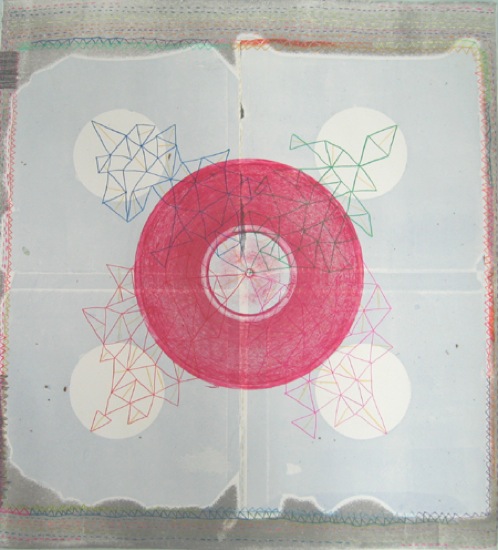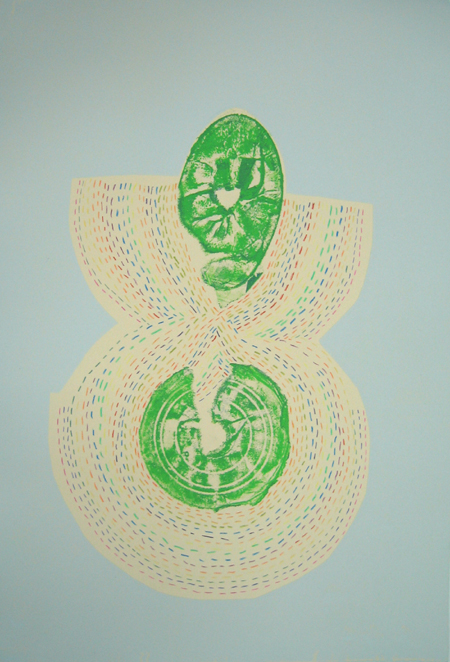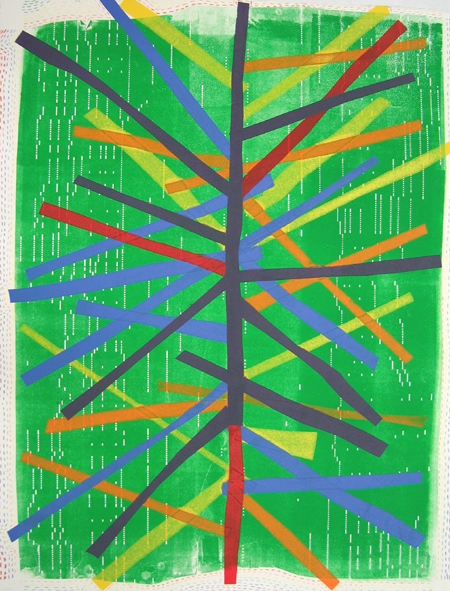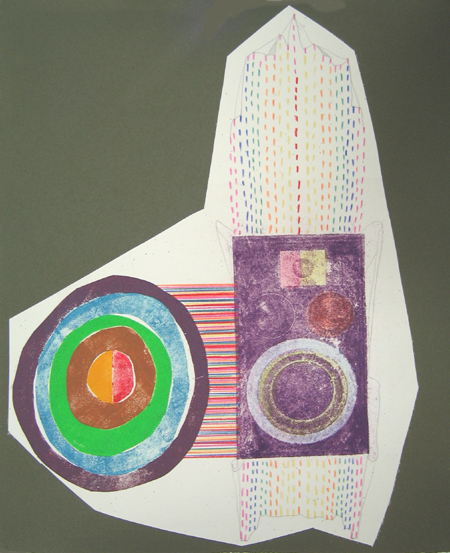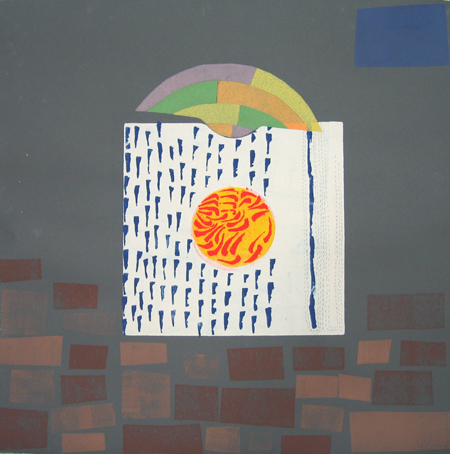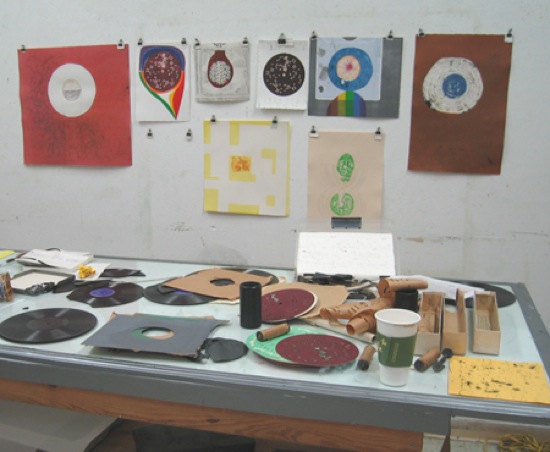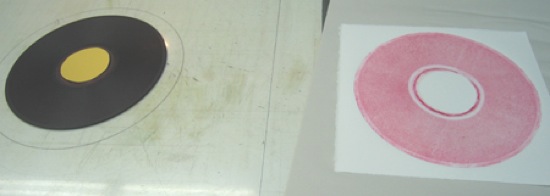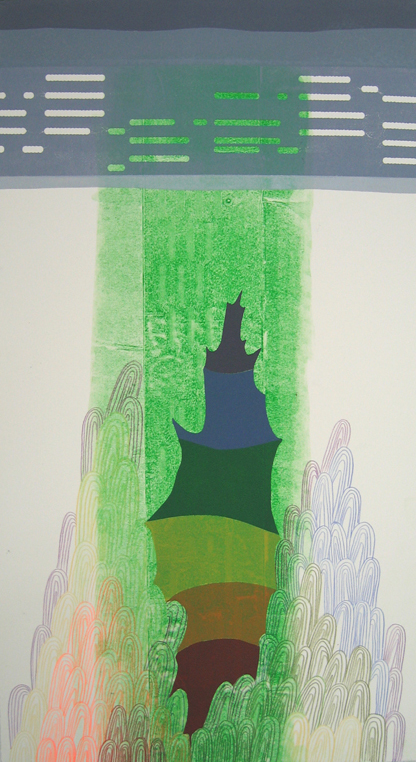2006
printer ink
various papers
various sizes
printing press
in june of 2006 i was invited up to san francisco for a residency at aurobora press. i worked for 8 days on a series of works on paper, printing with a master printer during the day using various monotype processes, and working with drawing and handwork at night. i ended up with 22 finished works of various sizes.
instead of arriving with a plan, a score, or a conceptual umbrella, i decided to arrive with half a plan – to allow the printing process to suggest possible moves as opposed to trying to force the process to fulfill pre-determined expectations.
my half a plan involved the presence of two disconnected inspirations – one was the use of objects related to sound such as: using a player piano roll, mechanical instrument scores, old audio tape, old 78rpm records, record sleeves, paper speaker cones, wires, etc. were inked and run through the press… the other thing present in each work was the use of a series of 480 colored notations related to the parts list for one of buckminster fuller’s first pre-fab geodesic dome for the ford motor company (which listed 30 reds, and 90 yellows, oranges, greens, blues, and violets).
every print i made had some relationship to sound and fullers 480 color coded parts. alongside these “things” was an attempt to allow the printing process itself to trigger decisions. i love old printed ephemera such as book covers, record albums, packaging, etc. so it made a lot of sense that i ended up responding to using mylar as a plate to generate flat blocks of color, shapes defined by cut edges of paper rather than a brush line or a pencil line. thus, the resulting flat colored shapes were particularly exciting because they could not have been made through the process of drawing or paintings – but could only come about through the printing process. the works were not planned out, but evolved organically, allowing the results of each run through the press to determine a next move.
in the end i still have no real conceptual framework to connect fuller’s parts to the remainders of old sound carriers; but i’m interested as always in what this open and unresolved conversation between the two can create.
